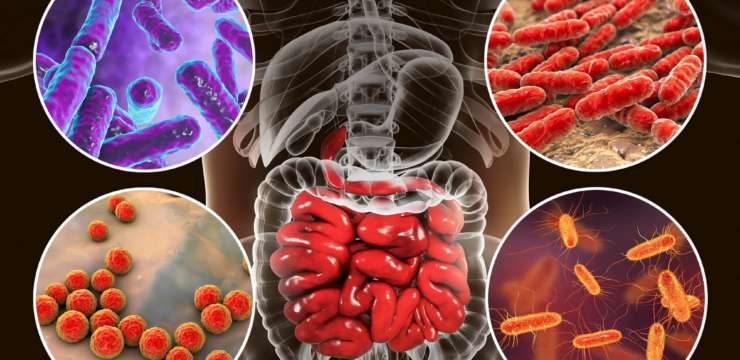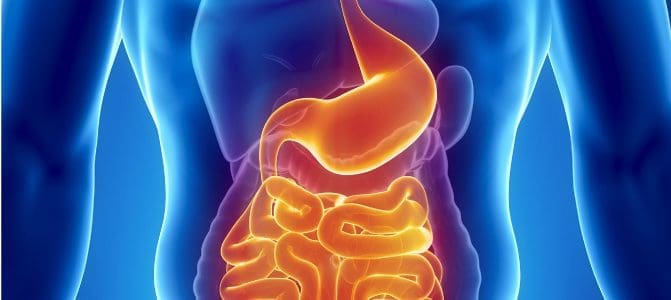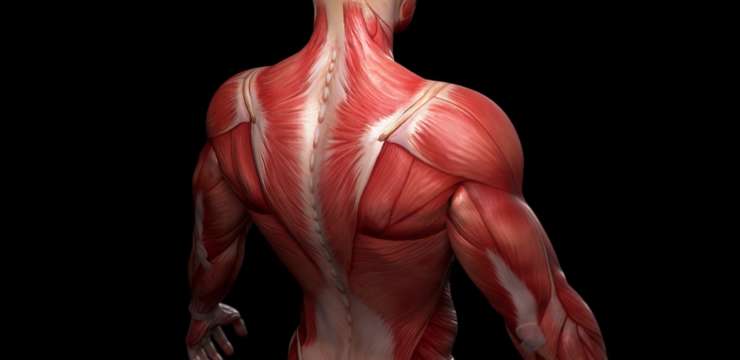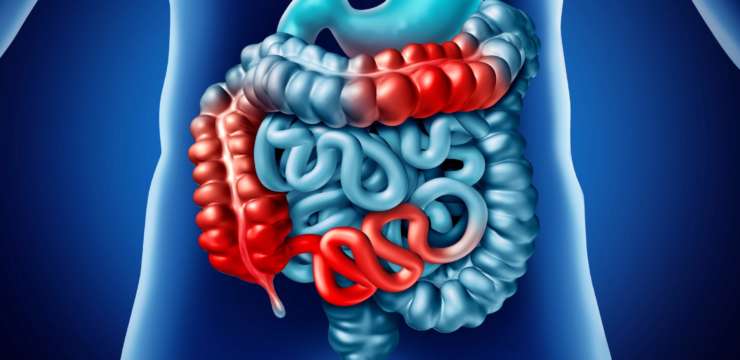Introduction The body’s microbiome is a host of trillions of microorganisms that help form an ecosystem that interacts with the entire body system. Each of…


Introduction The body’s microbiome is a host of trillions of microorganisms that help form an ecosystem that interacts with the entire body system. Each of…

Introduction The body has specific roles for each of the systems that are inside. The musculoskeletal system makes sure that the body is moving, while…
Hippocrates first mentioned the connection between the gut and other conditions. “All disease starts in the gut.” Indeed, the connection between our gut’s microbiome and…
Introduction The previous article talked about how photobiomodulation or low laser therapy can help improve the gut microbiome. Today’s article gives an in-depth look…

Introduction The body has a variety of functions that work simultaneously to make sure that it’s working correctly. From the musculoskeletal system all the way…

Introduction On today’s podcast Dr. Jimenez DC, health coaches Adriana Caceres and Faith Arciniaga, and nutritionist Ana Paola RodrÃguez Arciniega will discuss the steps to…

The symptoms associated with virus infections vary; some patients report physical pain, others have gastrointestinal issues, others say their mucous production is elevated, and others…

The gut has a significant impact on the rest of the body systems. Research has shown an overlap in risk profiles when assessing the gut and its connection to the other human body systems. For example, the chronic health conditions linked to gut dysfunction are eczema, leaky gut, brain fog, headaches, inflammation, swelling, and an abundance more.Â
The Gut
The human gut is flooded with pathogens and bacteria. These gut pathogens are essential for health and proper function. The bacteria that infest the gastrointestinal tract is combined with both positive and negative commensals. The digestive tract associated with these microbes is known as the gut microbiome. The gut microbiome has an essential role in disease and overall health. There are over 1000 microbial species living within the gut.Â
The growth and involvement of the human microbiome begin at birth. An infant does not have many pathogens. However, at birth, they are quickly colonized. As infants pass through the mother’s birth canal, they are exposed to the mother’s microbiome. This process heavily influences the child’s intestinal flora. Infants who were born via cesarean section showed a reduced number of microbes by the age of just one month.Â
Additionally, the human microbiome contains genes that are linked to metabolic processes. The bacteria in the human gut produce essential nutrients such as vitamins and hold a high responsibility to synthesize amino acids. The lining of the gut consists of tight junctions. Over time, these tight junctions can become irritated if the bacteria is off balance or food is not being digested properly. When food becomes an irritant, it causes the body to create additional inflammation. The undigested food particles then begin leaking out of the gut, back into the bloodstream.Â
Inflammatory Pathways Impacted By Gut HealthÂ
The intestinal epithelium layer is the main component separating the immune system and the external environment. Cells alert threats from pathogens by signaling the immune system through receptors that are associated with specific bacteria in the gut. These responses lead to the release of peptides, cytokines, and white blood cells. These responses can even trigger cell death.Â
The gut-brain axis is communication that relies on neural, hormonal, and immunological signaling. This communication is directly related, and stress has been shown to influence the integrity of the gut and its production, ultimately leading to changes in metabolism.Â
IBS is abdominal pain or discomfort associated with inflammation and changes in gut habits. Those who have higher bad bacteria levels in their gut suffer from more inflammation and side effects associated with IBS.Â
Inflammatory pathways can disrupt many body functions. Some have been linked to metabolic diseases such as type 2 diabetes. Although type 2 diabetes is a complex disorder influenced by genetic and environmental factors, it may also involve the composition of the intestinal microbiota.Â
Gut Health and The Musculo-Skeletal SystemÂ
As previously stated, the gut microbiota is now recognized as a major contributor to health-related issues of the host. With imbalanced microbiota (associated with undernutrition, inflammatory and metabolic diseases, etc.), we see the influence of skeletal muscle and how it is impacted in relation to growth, performance, aging, and chronic diseases.Â
Conversely, microbial imbalance alters the intestinal barrier (leaky gut), allowing the passage of endotoxins (like undigested food particles and lipopolysaccharides). These endotoxins trigger innate immunity, leading to low-grade inflammation and, as a consequence, muscular disorders.Â
Additionally, we see muscle loss and weakness linked to increased morbidity and mortality recently related to systemic inflammation.
Chiropractic can be defined as “a system of healthcare which is based on the belief that the nervous system is the most important determinant of a person’s state of health.” Chiropractic treatments include the manipulation of the spine. With the manipulation of the spine, digestive disorders have seen improvement. Regular chiropractic visits are also shown to help decrease overall inflammation. Â
InBody
Considering the topic of inflammation, the use of the InBody 770 provides an ECW/TBW ratio. This ratio considers science down to the orthomolecular level and is an inflammation indicator. Additionally, the InBody 770 report shows a breakdown of the water in each limb. This chart is helpful in understanding and pinpointing where inflammation is occurring. Additionally, we use the InBody 770 to see a patient’s SMM (skeletal muscle mass), body fat mass, percent body fat, visceral fat (a risk factor indication related to heart attack, stroke, and type two diabetes), and phase angle. The video below provides more information on how a BIA analysis works to provide this information.
Ways To Help Your GutÂ
THERE ARE MANY WAYS TO IMPROVE GUT HEALTH AND REDUCE INFLAMMATION. I HIGHLY RECOMMENDED HAVING LAB TESTING DONE TO TEST YOUR MICROBIOTA AND SEE WHAT STRAIN STRENGTH AND TYPE OF PROBIOTICS WILL HELP YOUR BACTERIA. ASIDE FROM THAT, EATING FERMENTED FOODS AND AVOIDING INFLAMMATORY TRIGGERS WILL REDUCE INFLAMMATION AS WELL. ANOTHER TEST I RECOMMENDED IS A FOOD SENSITIVITY TEST. THIS TEST WILL SHOW WHAT FOODS YOU ARE HAVING REACTIONS TO, AND THE SEVERITY OF THE DAMAGE CAUSED EACH TIME YOU INGEST THEM. -KENNA VAUGHN, ACSM-CEP, SENIOR HEALTH COACHÂ
Sample reports for both of these tests are shown below:Â
[wp-embedder-pack width=”100%” height=”400px” download=”all” download-text=”” url=”https://www.vibrant-america.com/secure/home/DownloadDoc?video_id=2&document_id=1&doc_mime_type=pdf&doc_name=MK-0081-01%20New%20Food%20Summary%20Sample%20Report” /]
[wp-embedder-pack width=”100%” height=”400px” download=”all” download-text=”” url=”https://www.vibrant-america.com/secure/home/DownloadDoc?video_id=2&document_id=1&doc_mime_type=pdf&doc_name=MK-0026-11%20Gut%20Zoomer%203.0%20Sample%20Report” /]
References:Â
Bull, M. J., & Plummer, N. T. (2014). Part 1: The Human Gut Microbiome in Health and Disease. Integrative medicine (Encinitas, Calif.), 13(6), 17–22. Â
Gizard, F., Fernandez, A., & De Vadder, F. (2020). Interactions between gut microbiota and skeletal muscle. Nutrition and metabolic insights, 13, 1178638820980490. doi.org/10.1177/1178638820980490Â
Segen JC. Dictionary of alternative medicine. Stamford: Appleton and Lange; 1998. Â

The human body is more complex than scientists understand. Constantly, new research is being conducted and published that dives deeper into the bodies of multiple systems, uncovering new thought-provoking information. As of late, a lot of research is being conducted revolving around the human gut/gastrointestinal system. Originally thought, the gut was made to store and digest food. However, now we see that the gut is the real mastermind behind everyday bodily functions. The gut has now been linked to headaches, inflammation, and autoimmune disease.Â
BackgroundÂ
The digestive tract is one of the essential immune support organs. In fact, it is the immunological powerhouse that houses more than 80% of our antibody-producing cells. This means that our gut is the first line of defense when it comes to unwanted antigens. The gut is so powerful that researchers began to question and test its true abilities.Â
The GutÂ
The thought of the body having two brains sounds fictional, but scientists have begun referring to the gut as the body’s “second brain.†Researchers found that the brain in the human skull, working with the Central Nervous System (CNS) and the gut working with the Enteric Nervous System (ENS), can function separately. Although the two use the same “hardware,†the ENS can manage every aspect of digestion and is a nearly self-contained network of neurotransmitters and proteins.Â
Just throughout the small intestine, there are more than 100 million nerve cells. If you combine the number of nerve cells in the human GI tract, you will find that there are more nerves in the gut than there are in the human spine. This allows the ENS the capability to help with ION transport and GI blood flow.Â
Nearly every substance the body contains to control the brain can simultaneously be found in the gut. One of these substances being serotonin. 95% of serotonin is housed in the gut. A cell referred to as the enterochromaffin squirts serotonin into the wall of the gut, which then communicates with the nerve cells to get things moving. 90% of communication occurring is from the gut to the brain. When we take this into consideration with chiropractic care, we see how it is all connected. Chiropractic care focuses on the musculoskeletal system. The musculoskeletal system includes bones, muscles, tendons, ligaments, and soft tissue. All of these work together to support your body’s weight and help you move to perform daily functions. Injuries, disease, and aging can cause pain, stiffness, and other problems with movement and function. The muscular system is an organ system that consists of skeletal, smooth, and cardiac muscles. Smooth muscle is what lines the interior of the gut. As we know, the muscle systems in vertebrates are controlled through the nervous system. In fact, studies have shown that chiropractic care helps to reduce constipation, low back pain, and overall well-being. This study shows how the gut and digestive systems are directly connected to chiropractic care.
Inner Defense SystemÂ
As previously mentioned, the gut is our inner defense system. The mucosal layer that is associated with lymph node tissue is our primary source of immunological function. Gut-Associated Lymphoid Tissue (GALT) is the first to see foreign invaders and put up a fight. GALT produces two levels of defense, the most abundant being secretory IgA. Secretory IgA binds to antigens to provide protection against microbes.Â
It is important to note that secretory IgA in itself is NON-Inflammatory. However, when secretory IgA is fighting, it sends off signals for help from other immune cells, such as IgG and IgM, which do produce an inflammatory response.Â
Most individuals who have an autoimmune disease have worn-out IgAs. The goal of the gut and its defense system is to keep nutrients in while bouncing antigens off. In the case of autoimmune diseases, we see nutrients leaking out and antigens coming in.
InBody
In order to gain a better understanding of the health of our patients, we use the InBody 770. This allows us to assess health down to the orthomolecular level. With the use of the InBody, we can see phase angle, visceral fat (higher visceral fat has an association with type 2 diabetes, heart attack, and stroke), intracellular water, extracellular water (this is related to inflammation and swelling), lean muscle, and percent body fat. These numbers are critical when considering a health condition, especially if the extracellular water is high. We see a direct overlap in risk profiles with excess extracellular water to other inflammatory diseases and markers.Â
With more research shining a light on these, we see the true the gut and how it comes into play with autoimmune disease and inflammation.Â
[embedyt] www.youtube.com/watch?v=_6_sG_JV-0Q%5B/embedyt%5D
THE GUT IS GENUINELY SO POWERFUL AND HIGHLY OVERLOOKED. I CAN SPEAK FROM EXPERIENCE IN HAVING AN AUTOIMMUNE CONDITION WHERE NOT A SINGLE DOCTOR MENTIONED MY DIET OR MY GUT! NOW, KNOWING THIS INFORMATION AND BEING SURROUNDED BY PATIENTS WHO SUFFER FROM A DISEASE SIMILAR TO MINE, IT IS THE FIRST PLACE WE LOOK. THE GUT IS THE POWERHOUSE AND SHOULD BE TREATED AS SO. -KENNA VAUGHN, SENIOR HEALTH COACHÂ
ReferencesÂ
University, Functional Medicine and Ronald Grisanti , directors. Physiology of the Gut Associated Lymphoid Tissue, Enteric Nervous System and Mucosal Barrier. Functional Medicine University – The Leader in Online Training in Functional Diagnostic Medicine, 2010,.
Rédly M. (2001). The effects of chiropractic care on a patient with chronic constipation. The Journal of the Canadian Chiropractic Association, 45(3), 185–191.Â

The association between heart failure, cardiovascular disease, and fibrosis with a metabolic marker TMAO is key to preventing and reversing these chronic conditions. TMAO contributes…

Inflammation Fighting Smoothie
Dark leafy greens as well as certain fruits are a great way to help the body naturally fight off inflammation. We’ve put together a simple smoothie that can be consumed every morning to fuel your body and help reduce inflammation.
¾ cup orange juice
½ cup ice
½ spinach
1 cup strawberries, sliced
½ cup blueberries
2 tbsp flax seed
Additionally, it is great to add powder pre and probiotics to smoothies. This ensures we are feeding the microbiome the healthy bacteria it needs to flourish.
For additional protein, add in 1 scoop protein powder or 5oz of greek yogurt

Increased intestinal permeability is the gateway to autoimmune diseases. It has become well-known that intestinal permeability is the third element leading to autoimmune pathogenesis along…

Gluten related diseases are a global phenomenon. The numbers are outstanding; 10% of the global population reports having wheat sensitivity, and 1% is diagnosed with…

Our gastrointestinal tract hosts more than 1000 species of bacteria that work symbiotically with us to promote a balanced immune system, metabolize nutrients, harvest energy,…

The food that we eat has an impactful effect on our health. Sometimes symptoms like depression, eczema, mood swings, headaches, digestive problems, joint pain, weight…

What is gluten? Gluten is the protein found in wheat, barley, and rye. Unfortunately, gluten is the stable of the American diet and hidden in many foods, like soy sauce for example. 99% of people who have a problem with eating gluten do not even know it. They associate their poor health and discomfort with other instances. However, this is becoming an epidemic as those who have a gluten intolerance or sensitivity (diagnosed or undiagnosed) have a significantly higher chance of developing heart disease. So far, there have been 55 diseases that are linked to eating gluten.

Crohn’s disease is an inflammatory bowel disease (IBD). IBDs are health issues that affect the digestive tract by causing inflammation that lasts longer than an…